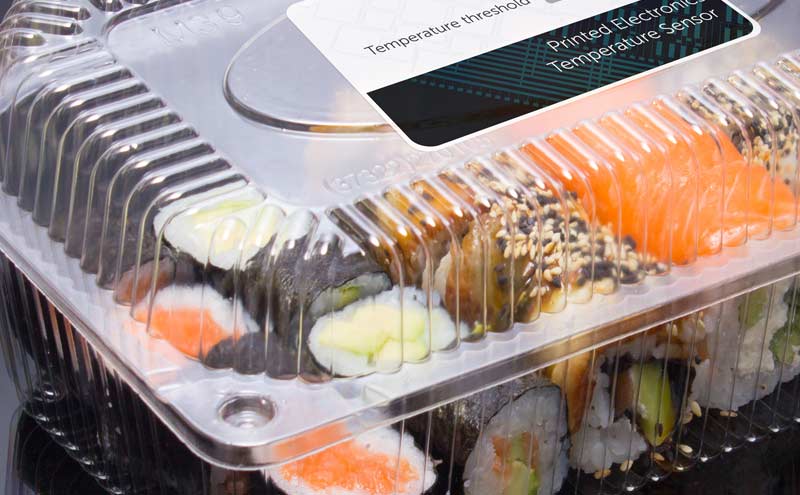Wouldn’t it be convenient to have a wooden table that could do double duty as a desk and a stovetop? What about a T-shirt that monitors your heart rate and blood pressure when you exercise? Surely, you will want the ceramic wall tile that, with a press of your finger, transforms into an electric screen that can operate all the devices in your living room.
Indeed, almost every product we surround ourselves with someday could become electrified. That was the takeaway from a presentation titled Connected by Materials with scientist Dr. Andrew Dent at this year’s ICFF. Dr. Dent works for Material ConneXion, which maintains the world’s largest database of smart materials. He described a world without wires and switches in which many of the surfaces in your home could be transformed into electronic screens.

Courtesy of Material ConneXion
Dr. Dent doesn’t consider current gadgets such as the Apple Watch to be that smart. He compared the latest Apple sensation to a smartphone attached to a strap. No, for Dent, real progress is in making electronics that can be incorporated into smart materials that are stretchable, lightweight and portable.
“We ultimately want to do something that can be applied on the skin,” said Dent, “If we could [install electronics] in a temporary tattoo, then we could apply them anywhere we want to.”
Temporary electronic tattoos don’t seem that outlandish considering how rapidly the physical boundaries to installing electric circuits are disappearing. Scientists are developing battery prototypes that are so stretchable and flexible that they could be woven into clothing. Some of the biggest breakthroughs have been in conductive ink and paints that can be used to create electrical circuits on surfaces ranging from paper to polyester.
As for the removable tattoo, Dent said that it could be designed to monitor a person’s vital signs as well as the levels of pollution the wearer experiences in their environment. For example, with a high-tech removable tattoo, a swimmer could determine the pH level of the lake that they were swimming in or whether it contained sewage runoff.
Smart labeling is another promising area of research. RFID tags already provide an incredible amount of information about a product’s history and price to consumers and to companies. However, the big breakthrough in labeling is with smart tags that can track a product’s life history in real time. A company called Thin Film Electronics is working on flexible labels that could record storage times and temperatures for perishable goods that you could read with your smartphone. Thus, in the future, you no longer will have to worry about whether or not store bought sushi is fresh because the label on it will continuously update to provide that type of information.
Then there is that bane of modern existence, wires running amok in the office or the home entertainment center. Someday soon not all devices will need wires–they will be recharged by a wireless current running from a battery, similar to how wireless Internet connections work. LG already has wireless charging pads that use induction to charge devices, but that technology has a limited range. A company called WiTricity is developing magnetic resonance technology, which could transfer electric charges throughout your house to devices that incorporate specially designed magnetic resonators.
Many companies already have prototypes of futuristic furniture in development. Earlier this year, Ikea debuted its Concept Kitchen 2025, which included insulated kitchen cabinets that potentially could be used instead of a refrigerator to keep perishable items fresh. Ikea’s Concept Kitchen also features an ordinary looking table with a camera overhead that uses induction cooking to heat up food. Dent said that such a system also could be used to weigh food and even suggest recipes.
Some readers might be concerned that in the interconnected and electronically advanced home of the future, there would be many more possibilities for everything to go haywire. Dent said that a big challenge is to enable communication between smart appliances and smart furniture made by different manufacturers.
“Whenever you build these types of systems, you need to ensure that it works not only with your product but with everything else,” he said. “One of the big advantages that companies like Samsung and LG have had is that they not only produce everything in the kitchen, [the products] also talk to each other and that ability also is a fail-safe.”
Ultimately, the smart material revolution should reduce the visual clutter of electric gadgets that increasingly dominate modern life. Indeed, the promise of electronically connected materials is that they can offer us more options and features while at the same time simplifying the appearances of products that we depend upon.
“The integration of technology is what we really are interested in,” Dent said, “To be able to put the electronics into your product seamlessly, while still being able to use your original materials to convey the product’s aesthetic.”
















